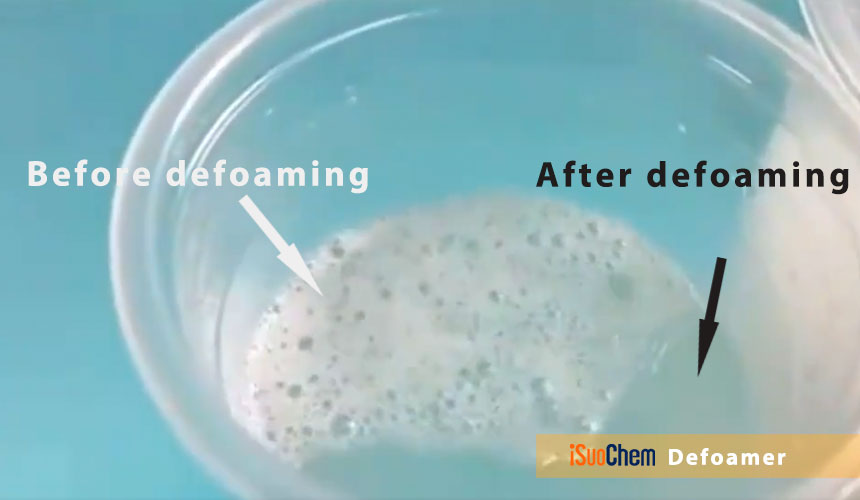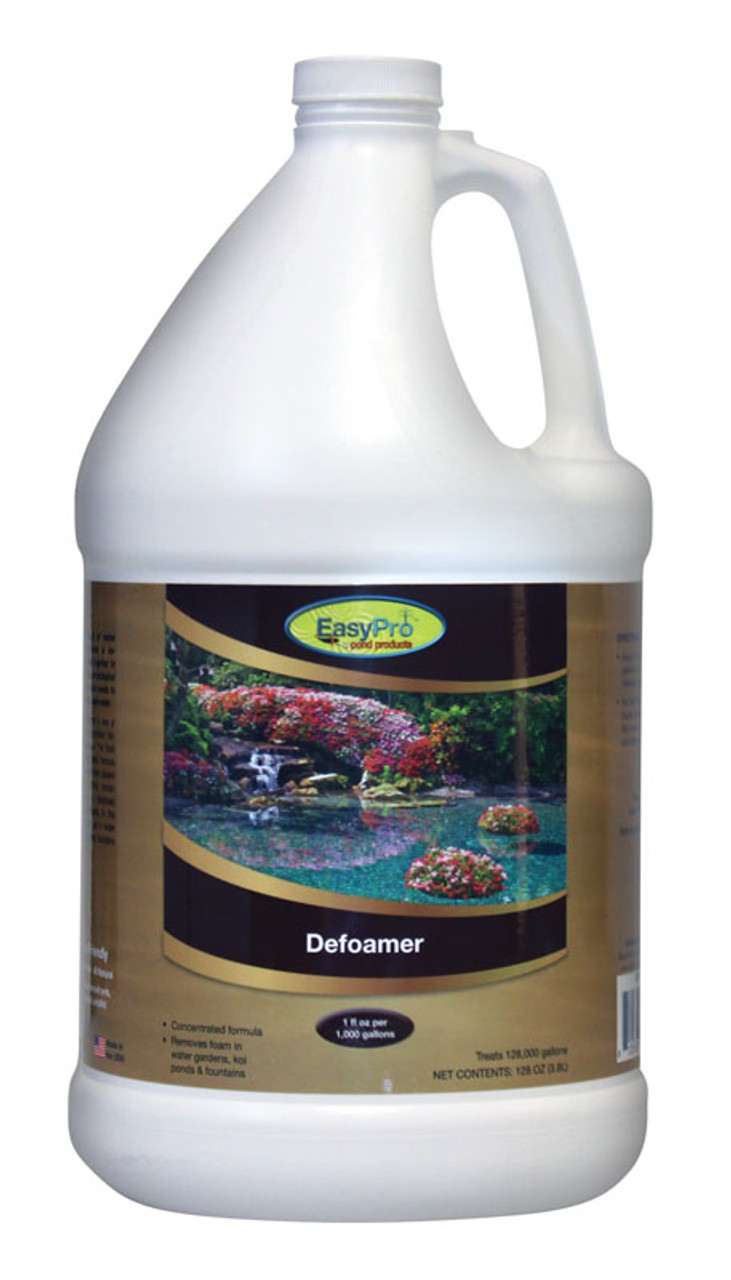The Science Behind Defoamers and Their Role in Foam Control
Choosing the Right Defoamer for Your Specific Application Requirements
Picking the ideal defoamer for specific application requirements is a nuanced procedure that demands mindful consideration of several elements, such as the foam kind, operating, and medium conditions. Recognizing the subtleties of defoamer performance-- including rate and determination-- while also representing environmental and regulatory elements is important. Additionally, involving in tests and talking to makers can provide important understandings. Navigating these complexities can be complicated, and the repercussions of a poor option might be considerable. What techniques can be utilized to make certain an ideal selection?
Comprehending Foam Development
Foam development happens when gas is entraped within a fluid, creating a stable structure of bubbles. This phenomenon can substantially influence numerous commercial procedures, specifically in sectors such as food manufacturing, pharmaceuticals, and wastewater treatment. The existence of foam can impede mixing, decrease product high quality, and even result in operational inefficiencies.
Foam usually creates due to a combination of elements, consisting of surface-active representatives, frustration, and the features of the fluid stage. Surfactants reduced the surface tension of the liquid, assisting in the development of bubbles that can integrate and support. Agitation, whether from mechanical stirring or gas introduction, enhances bubble development, bring about raised foam quantity.
Recognizing the technicians of foam development is critical for sectors aiming to optimize their procedures. By identifying the certain problems that promote foam generation, organizations can execute approaches to mitigate its results. This understanding lays the foundation for picking ideal defoaming agents that efficiently target the special difficulties positioned by foam in various applications. Subsequently, an extensive understanding of foam development is vital for boosting efficiency and maintaining product integrity throughout different industries.
Sorts Of Defoamers Available
Different kinds of defoamers are available to resolve the challenges presented by foam in commercial applications. defoamers. Broadly identified, defoamers fall right into three classifications: silicone-based, non-silicone-based, and natural defoamers
Silicone-based defoamers are renowned for their performance and security across a vast range of temperatures and pH degrees. They are typically used in applications where strong foam reductions is essential, such as in coatings, adhesives, and paints. Their low surface tension enables for fast foam collapse.
Non-silicone-based defoamers, often made from natural compounds, supply an alternative for applications sensitive to silicone residues. These defoamers can be additional separated right into polyether and ester kinds, each tailored to meet particular solution needs. Non-silicone defoamers are regularly used in food processing and individual treatment items due to their compatibility with various formulas.
Natural defoamers, originated from plant or pet resources, are getting grip as a result of their green profile. These products are particularly appealing in applications where governing compliance and sustainability are extremely important, such as in agrochemicals and biotechnology.
Selecting the right kind of defoamer is critical for maximizing efficiency and making certain compatibility with specific applications.
Trick Application Factors To Consider
When selecting a defoamer, it is important to think about the particular application requirements to ensure optimal performance. defoamers. Various markets have distinct needs, such as food handling, drugs, or wastewater treatment, and each application might need special defoaming residential or commercial properties
Trick aspects to examine include the tool in which the defoamer will be used, whether it is water-based, oil-based, or a combination thereof. The temperature level and pH levels of the application can additionally considerably affect the efficiency of a defoamer. Additionally, compatibility with various other chemicals present in the system is important to protect against adverse responses that can jeopardize performance.
One more essential factor to consider is the lathering behavior of the particular system. Understanding whether the foam forms quickly or gradually can assist the option of a defoamer that you could try this out targets the origin reason effectively. The wanted rate of defoaming can influence the option, as some applications call for rapid activity while others might tolerate slower defoaming processes.
Lastly, regulatory and ecological factors to consider should not be ignored, specifically in markets with strict compliance demands. Choosing a defoamer that aligns with these factors makes certain both efficiency and safety in the application.

Efficiency Screening Methods
Assessing the performance of a defoamer calls for an organized technique to screening that accurately measures its performance in certain applications. Numerous performance screening methods can be employed to identify the ideal defoamer for a given solution.
One common technique is the bubble test, which reviews the defoamer's ability to lower foam quantity over time. This test involves producing a secure foam and then adding the defoamer to observe the rate look at here now of foam collapse.

Ultimately, choosing the suitable efficiency screening method depends upon the certain application and the type of foam being attended to. Each technique provides valuable data that can assist formula changes and enhance the efficiency of the defoamer in practical applications.
Finest Practices for Selection


Next, think about the defoamer's performance in terms of rate of activity and perseverance. A quick-acting defoamer might be required for procedures where fast foam reductions is critical, while a much more relentless formula might be needed for long term foam control. In addition, assess the ecological impact of the defoamer, including its biodegradability and any kind of governing conformity requirements.
Conduct tests with picked defoamers to establish their effectiveness in real-world problems. By sticking to these finest methods, you can enhance foam control efficiency and ensure the long life of your processes.
Verdict
In recap, choosing the suitable defoamer necessitates a comprehensive assessment of numerous aspects, including foam kind, tool, operating problems, and ecological factors to consider. Comprehending the special attributes of foam formation and the readily available defoamer check my reference choices is vital. Furthermore, using effective efficiency screening methods and sticking to finest practices throughout the option process will improve the chance of attaining optimum defoaming outcomes. Eventually, a well-informed selection technique will address details application needs and alleviate lathering difficulties successfully.
Choosing the appropriate defoamer for particular application requirements is a nuanced process that requires mindful consideration of numerous variables, such as the foam medium, type, and operating problems.Picking the right defoamer is crucial for accomplishing ideal efficiency in foam control applications. A quick-acting defoamer may be essential for procedures where quick foam suppression is vital, while an extra persistent formulation could be needed for prolonged foam control.In summary, selecting the proper defoamer requires an extensive evaluation of various elements, including foam kind, tool, operating conditions, and ecological factors to consider. Understanding the one-of-a-kind features of foam formation and the readily available defoamer choices is critical.